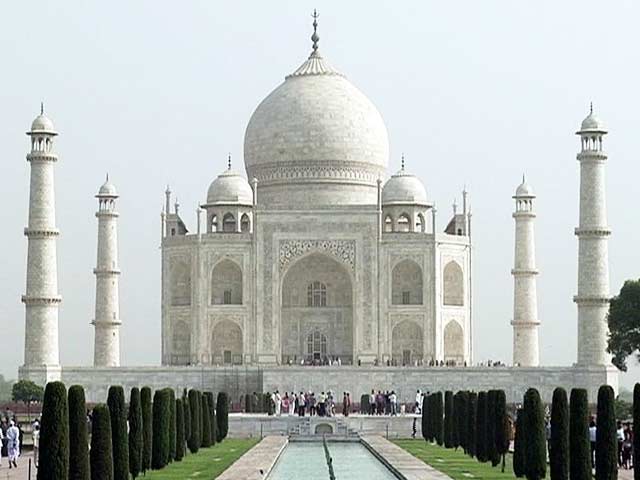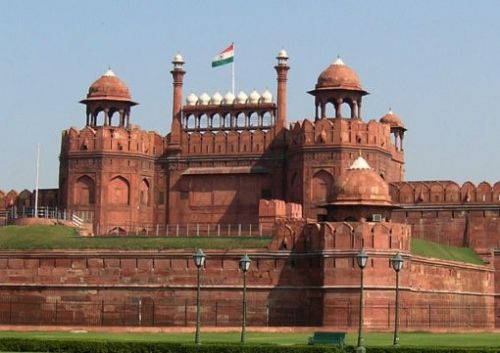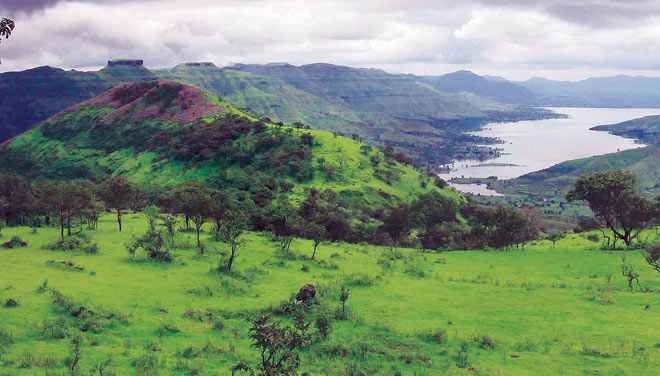Indian Culture: Traditions, Religions, Festivals, Music, Dance, Clothing, Food, Movies..!
 )
)
Culture is characterized as a people's lifestyle. It additionally involves how they dress, how they talk, the sort of sustenance they eat, the way in which they revere, and their craft among numerous different things.
Indian culture, in this way, is the Indians' lifestyle. Due to the populace assorted variety, there is gigantic assortment in Indian culture. The Indian culture is a mix of different societies having a place with having a place with assorted religion, ranks, locales take after their own particular convention and culture.
Indian Culture is one of the most established societies on the planet. India had a urban progress notwithstanding amid the Bronze age. The Indus Valley Civilization (Harappan Civilization) goes back to 3300 BC – 1300 BC.
Particular societies unique in relation to each other coincide together in a solitary nation. Therefore, In India there is solidarity in the midst of huge social decent variety. The way individuals live in India is mirrored its way of life. Solidarity in Diversity: India is a place that is known for solidarity in decent variety where individuals of various organizations, rank and religion live respectively. India is additionally called the place that is known for solidarity in decent variety as various gatherings of individuals co-work with each other to live in a solitary society. Solidarity in assorted variety has additionally progressed toward becoming quality of India.

Secularism: The word secularism implies fairness, unprejudiced nature, and so forth towards all religion. India is a mainstream nation, which implies, measure up to treatment of the considerable number of religions display in India.
Conventions: customary social esteems Motions Touching feet of older folks: Indian custom has rich social esteems. In India, more youthful show incredible regard to their older folks. They intense the feet of their older folks day by day in the wake of awakening and particularly on the happy events or before beginning an essential work.
Namaste: The motion of the Namaste welcoming is additionally part of the Indian culture. Individuals welcome each other by saying "Namaste" while joining their hands. "Namaste" signifies "Hi". (Likewise read, the importance of Namaste here.) Most Indians have a propensity for shaking their heads while talking.
Fasting: Many Hindus take after the custom of fasting amid any religious event like Maha-Shivratri,, Diwali, Karvachauth, and so forth. Spouses continue fasting for their Husband's long life in many events like "Karvachauth", and so on. Many individuals having a place with Muslim confidence go for fasting for around 30 days amid the period of Ramazan.
Atithi Devo Bhava: In India, individuals feel extraordinary when any visitor goes to their home. They welcome their visitors with deference and them with most extreme care. Indian puts stock in the idea of "Atithi Devo Bhava" which signifies "The Guest is viewed as equivalent to God". Read more about Indian Traditions.
Religions India is origin of four noteworthy religions, for example, Hinduism, Sikhism, Jainism and Buddhism. Different religions exist as minorities here, including Abrahamic religions.
India is known as a place where there is assorted variety, i.e., individuals having a place with relatively every confidence can be found in India. Numerous religions exist together in India, for example, Hinduism, Sikhism, Jainism, Buddhism, Islam, Christianity, Zoroastrians, Judaism and some more. Individuals of all religions live respectively with awesome peace.
Hinduism: Hinduism is one of the most seasoned religions that began from India. The religion has protected its way of life since old circumstances.
Islam: Islam is one of the conspicuous religions of India. There is enormous effect of Islam in the Indian culture.
Christianity: countless in India have a place with Christian confidence. St. Thomas is one of the general population credited for proliferating Christianity in India.
Jainism: Jain religion was established by Mahavira.
Buddhism: Buddhism was brought by Gautama Buddha.
Sikhism: Sikhism was established by Guru Nanak.
Dialects :India is home to various dialects, including Sanskrit which is one of the most established dialects on the planet. Different dialects, for example, Hindi are normally talked all through the Indian subcontinent, with territorial varieties.
As India is a place where there is assorted variety, diverse kinds of dialects are found crosswise over better places in India. Every region has their own particular dialects and individuals get a kick out of the chance to talk in their mom dialect.
There are endless speakers and in addition multitudinous dialects winning in India. The noticeable dialects in India other than English and Hindi are Bengali, Tamil, Telugu, Marathi, Urdu, Gujarati, Punjabi and some more.
Love Marriage and Arranged Marriages :There are two sorts of marriage framework winning in India; these are Love Marriage and Arranged Marriage. Masterminded Marriage framework is in the general public from ages. Orchestrated marriage is organized by the general population other than the individuals who are engaged with marriage. Most up to date type of marriage is the Love Marriage framework where the marriage is orchestrated by the general population who will be hitched.
Family System: the structure of the family-
Family frameworks in India are adaptable, steady and solid. By and by, both the frameworks, joint family and atomic, are available in India and they are similarly imperative.
Joint Family System: Many parts of India rehearse the joint family framework in which in which broadened individuals from the family live respectively. In a Joint Family System, about 3 to 4 ages of individuals live respectively. There is a culture of demonstrating admiration to their senior ones. The senior most or the most seasoned individual from the family is thought about leader of the family.
Atomic Family System: But now-a-days, individuals use to remain alone and atomic family framework comes in India. A critical purpose behind the making of atomic family framework is the adjustments in the calling. Individuals turn out from their home for better openings for work and in this way finished in remaining alone. In any case, that doesn't imply that the atomic framework is awful for the general public and the joint framework is useful for the general public.
Joint Family versus Atomic Family: Both the family frameworks are similarly essential as in Joint Family System; there is dependably a hand of older folks on their head which is critical for the family. Likewise in Nuclear Family System, individuals get their opportunity and in this manner comprehend the life widy.
Celebrations :There are distinctive kinds of celebrations celebrated in India with satisfaction and bliss. Distinctive individuals celebrate diverse celebrations according to their religion, position and culture. Individuals observe National celebrations like Independence Day, Republic Day and religion celebrations like Diwali, Holi, Eid, Guru Nanak Jayanti, Mahavir Jayanti, Buddha Purnima, Christmas, New Year and some more.
Workmanship and Architecture :Workmanship, writing, theater and film (counting the world well known Bollywood movies), and design have thrived in India for quite a long time and they keep on flourishing today. The Ramayana is one of the most seasoned known epic works of writing.
India has loaded with gifts in the field of craftsmanship or engineering. Indian Art incorporates sketches, rangoli, plastic expressions like ceramics, and material expressions like woven silk, and so forth. From Ancient ages, sketches are a piece of India workmanship. Cases incorporate sketches of Ajanta give in, Paintings of Ellora give in, and so on.
Rangoli are the workmanship for the most part made by the female individuals from the family. It is a craft of hues.
India is rich in engineering and it is one of the immense accomplishments of India. From ages, India has awesome number of engineering like Rock-cut sanctuaries of Mahabalipuram, sanctuaries of Thanjavur, Kanchipuram and some more.
UNESCO world legacy locales in India.
It appears that wherever you hand over India you will go over a site of memorable, normal or social significance. India is rich in legacy, and a portion of the primary UNESCO world legacy destinations in India are recorded beneath.
!
The Taj Mahal: Tourists rush from everywhere throughout the world to see this radiant seventeenth century castle. A prior structure, housed on a similar site known as Humayan's Tomb is likewise an UNESCO World Heritage Site.

The Great Himalayan National Park: This national stop is arranged at the base of the world's tallest mountain.

Agra Fort: The Yumana stream streams gently past this antiquated post in the province of Uttar Pradesh.

The Elephanta Caves: Deep inside these spooky caverns you will discover rich statues and plans cut by the human hand.

The Western Ghats: These mountains are prestigious for their strange backwoods and their untamed life sancturies.
The dialog on Indian culture would stay fragmented on the off chance that we don't talk about the different traditional and overlay move types of India. India is a place that is known for differing move shapes. The principle Indian moves are Folk Dance and Classical Dance.
The most well known Classical move shapes are Bharatnatyam, Kathakali, Kathak, Manipuri, and so forth.
People moves are for the most part performed in any event like birth of a tyke, celebrations, reaping seasons, wedding occasions, and so forth.
People Dances incorporate Gaur Dance, Chhau Dance, Bihu Dance, Dumhal Dance, Padayani Dance, Dollu Kunitha Dance, Dandiya Dance and some more. These are praised in various events by the general population of India.
Music: Music is something which exists from the earliest starting point of Indian culture. These are fundamental components of the Indian culture and a piece of human life. There are diverse instruments like drums, cymbals and so forth..
Singing is basic amid merriments and festivities. These melodic instruments can create distinctive sorts of melodic sounds which are lovely to hear and furthermore influence the body to quiet.
In early ages, there were Kalidas, Surdas, Tulsidas, Kabir, and so forth who were prevalent for their music and melodies.
The assorted type of Indian culture is reflected in Indian music. There are distinctive types of music, for example, ghazals, shayari, society music and some more.
There were numerous legends that make...!
Congratulations @deepak2001! You have completed some achievement on Steemit and have been rewarded with new badge(s) :
Click on any badge to view your own Board of Honor on SteemitBoard.
For more information about SteemitBoard, click here
If you no longer want to receive notifications, reply to this comment with the word
STOP